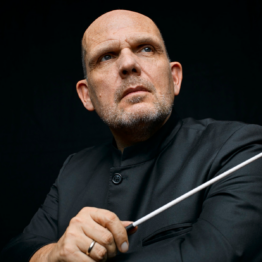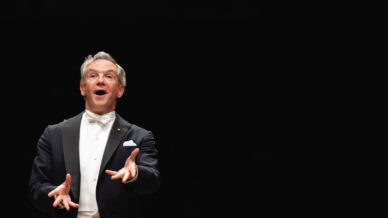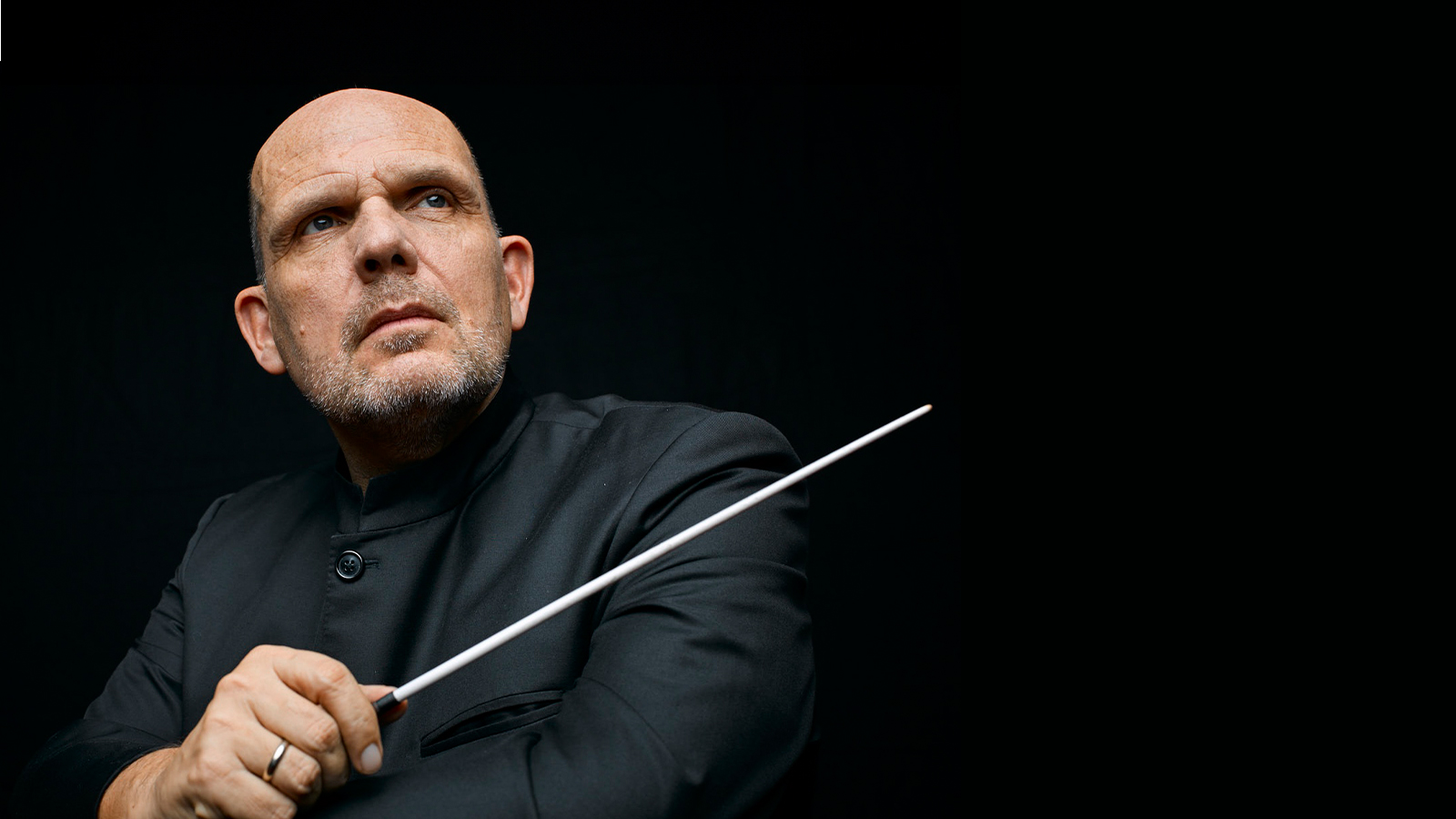

Jaap van Zweden Conducts Shostakovich and Mozart
May 1 – 3, 2025
JAAP VAN ZWEDEN conducts
CONRAD TAO piano
PROKOFIEV Symphony No. 1, “Classical”
MOZART Piano Concerto No. 23
SHOSTAKOVICH Symphony No. 5
Jaap van Zweden returns to Dallas for Shostakovich’s eloquent Fifth Symphony. Despite its grandeur and optimistic façade — huge climaxes, triumphant marches, exhilarating brass and percussion — a profound sadness cries out in the third movement, the spiritual center of the work. Yet, one critic says, “some shadow of Shostakovich’s indomitable spirit had seeped, surreptitiously, into the souls of attentive listeners.” Conrad Tao “ferociously talented” (TimeOut New York) joins our Conductor Laureate and the orchestra for Mozart’s elegant Piano Concerto No. 23. Opening the concert is Prokofiev’s charming Haydn-inspired “Classical” Symphony.
Join us for a special pre-concert talk with Assistant Conductor Shira Samuels-Shragg (Marena & Roger Gault Chair)! The talks will take place from Horchow Hall starting at 6:30pm on Thursday, Friday and Saturday.

You may also be interested in

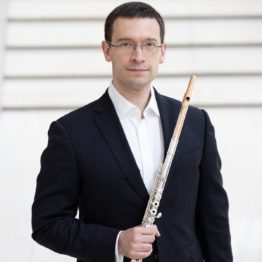
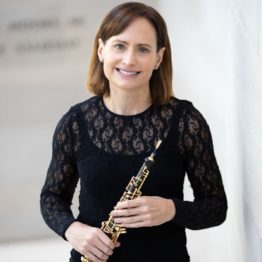
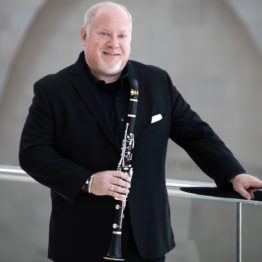
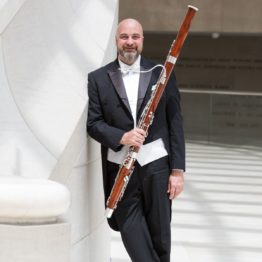
You may also be interested in
Program Notes
by René Spencer Saller
The last major composer to grow up in Tsarist Russia, Prokofiev was the only child of a country estate manager in Sontsovka, Ukraine. His mother, a talented pianist, was his first teacher. At 13 he was accepted into the St. Petersburg Conservatory, where he took a class in orchestration with Rimsky-Korsakov. During his decade at the conservatory, he developed into a virtuosic pianist with a pronounced avant-garde streak. In 1914 he left his increasingly unstable homeland for London, where he composed a ballet for Diaghilev and took in Stravinsky’s sensational scores for Firebird, Petrushka and The Rite of Spring. He returned to Russia and found that conditions were even worse than before.
By 1917, when he finished his Symphony No. 1, his homeland was in chaos. As Russia continued losing an unpopular war against Germany and Austria, thousands of his fellow countrymen starved, and thousands more took to the streets. In February Tsar Nicholas II was forced to abdicate, and in November Vladimir Lenin’s Bolshevik Party wrested control from the provisional government. St. Petersburg — Prokofiev’s home base since his early teens — was at the center of everything. Renamed Petrograd, it was the nucleus of dissent, the place where protests and strikes turned into bloody regime changes.
A Closer Listen
The First Symphony, aptly nicknamed “Classical,” doesn’t sound much like the soundtrack to a revolution. Indeed, during the tumultuous spring and summer of 1917, Prokofiev holed up in a village outside St. Petersburg, as far from the riots as he could manage. He read Kant and pored over Haydn scores.
A superb pianist, Prokofiev purposely left his piano behind. He believed that the instrument had become a crutch and that composing without it might make his orchestral colors clearer and cleaner, his themes stronger, more Haydnesque. Rather than quote the Classical master, Prokofiev would channel him. As he later explained, “It seemed to me that, if he were alive today, Haydn, while retaining his own style, would have appropriated something from the modern. Such a symphony I now wanted to compose: a symphony in the classical manner.” He added that he “secretly hoped that in the course of time it might itself turn out to be a classic.”
His wish came true. This key-hopping, time-traveling marvel of concision ranks among the most popular symphonies of the 20th century.
Mozart’s Piano Concerto No. 23 reminds us that the best epiphanies happen not when our expectations are met but when they’re met in previously unimagined ways. This concerto delivers beauty in all of its jolting weirdness: the moment we hear the dissonance as sweet and sour and unreasonably delicious; the instant we let strangeness snake its way into the familiar and swallow it whole.
By March 1786, when Mozart completed his Piano Concerto No. 23, he was the undisputed master of such satisfying surprises. Never merely pretty, the Concerto in A Major gratifies only to gob smack. The light-spangled simplicity of a few plinked notes sends us hurtling into a kaleidoscopic fugue. An unassuming melody turns richly contrapuntal, only to unravel before our ears.
Since early childhood, when he toured the continent as a keyboard and violin prodigy, and throughout his teens and early adulthood, when he joined his father as a court musician, Mozart had been a dutiful son. But in 1781, at age 25, he defied his father and left Salzburg for Vienna, the nexus of musical culture for German speakers. Although he dreamed of writing operas, he focused at first on his more profitable career as a pianist-composer. This was mostly by necessity: he was chronically broke. But luckily, he was also prolific. Between 1784, the year he began Piano Concerto No. 23, and 1786, the year he finished it, he cranked out a dozen piano concertos, all more or less magnificent.
A Closer Listen
Although it’s certainly tricky and taxing, Piano Concerto No. 23 is more than a showpiece. The virtuoso must be an accompanist, too: a chamber musician, the closest of close listeners. The intimacy is heightened by the substitution of clarinets for oboes and the absence of trumpets and drums in the score.
The opening Allegro, in A major, begins with a radiant tutti that generates two main thematic ideas: the first cheery, the second a delicate downward sigh. Taking up both themes by turn, the piano reimagines them and reveals new melodic angles. Traces of F-sharp minor emerge, hinting at the upcoming slow movement. Fluttering figuration and Bach-like counterpoint lead to a stunning cadenza, which Mozart, contrary to his usual custom, fully transcribed.
The central Adagio begins with a devastatingly fragile piano melody, which the strings somberly repeat. Unusually for Mozart, it’s in F-sharp minor, the only instance when he used it as the main key of a movement. Flute and bassoon conspire in a bit of brightness, but the piano refuses to be consoled. As the Adagio ends, the piano perseverates on a single note against pizzicato strings: sorrow exalted to silence.
Puncturing the quiet, the Allegro assai erupts in a delirious rondo, returning to the home key and the brilliant back-and-forth of the orchestra and solo piano.
In 1925, when Shostakovich wrote his Symphony No. 1 in F minor, he was only 18 years old. The talented St. Petersburg native had started piano lessons as a child with his conservatory-trained mother, advancing so rapidly that he was accepted to the Petrograd Conservatory at age 13. His First Symphony, submitted as a graduation thesis, quickly became an international sensation. Soon after its Leningrad debut, on May 12, 1926, the new symphony made the rounds of the major orchestras.
But after this promising launch, his career took a sudden nosedive. In 1936, around the time that the composer was preparing to debut his groundbreaking Fourth Symphony, Joseph Stalin attended a Moscow performance of Shostakovich’s opera Lady Macbeth of Mtensk District — nearly two years after its successful premiere in Leningrad — and denounced it in an anonymous broadside titled “Muddle Instead of Music.” Condemned for its dissonant bourgeois degeneracy and other violations of Communist dogma, the opera disappeared from the repertoire for about 40 years.
By the mid-1930s, Socialist Realism was not only Russia’s dominant musical style; it was the only safe musical style. Composers who dared to explore avant-garde Western forms soon learned to expect the wrath of Stalin and his cultural watchdogs. Many Russian artists, composers, and patrons were executed, sent to gulags, or simply made to vanish. Concert music was expected to honor the proletariat and impart an unequivocally patriotic message. State-approved compositions typically incorporated folk songs and ended in a major key.
After getting slapped with the Lady Macbeth review, Shostakovich was justifiably terrified. For several months he slept in the stairwell outside his apartment to spare his family the trauma of witnessing his arrest. He withdrew his Fourth Symphony from performance. Over the next couple of years, he kept his head down, occupying himself with an arrangement of a Strauss operetta, some film scores and various duties associated with his new position as conservatory professor. He would not share the Fourth with the public until 1961.
Despite the Lady Macbeth misstep, Shostakovich was able to restore his good standing with his Soviet overseers, thanks in no small part to the proletariat-pleasing, censor-appeasing Fifth Symphony, which caused a sensation at its 1937 premiere. He even agreed to describe the D-minor Symphony as “a Soviet artist’s reply to just criticism.” By this point, he understood how to tiptoe around the government censors, although he sometimes felt compelled, whether out of bravery or sheer perverseness, to poke at them instead.
He began the Fifth Symphony on April 18, 1937, and finished it a mere three months later, on July 20. Evgeny Mravinsky led the Leningrad Philharmonic in the world premiere on November 21, 1937. The applause afterwards lasted longer than 30 minutes, causing the composer’s friends to fret that it might provoke a backlash from the Soviet authorities. He was safe, though, at least for the time being.
Although audiences loved the Fifth, early reviews were uneven. Pravda slammed it, calling it “a farrago of chaotic, nonsensical sounds.” On the other hand, the state critics also pronounced it “a work of such philosophical depth and emotional force [as] could only be created here in the USSR.”
Shostakovich, for his part, described the Fifth as a response to human suffering: “I wanted to convey in the Symphony how, through a series of tragic conflicts of great turmoil, optimism asserts itself as a worldview.”
A Closer Listen
In his program notes, Shostakovich described the Moderato as a “lengthy spiritual battle, crowned with victory,” which may explain the martial, menacing main theme. In this long and remarkably varied movement, he juxtaposes a stark string motif with a more diffuse, melancholy secondary theme, derived from a Slavic folk song; this combination gives way to a violent, pell-mell march. A lustrous duet between solo flute and horn leads to a haunting, celesta-kissed coda, which resurrects the first theme.
The Allegretto functions as a brief scherzo, in contrast to the more serious surrounding movements. Crackling with a broad, often grotesque humor, the second movement displays a panoply of instrumental colors. A queasy waltz, pizzicato string counterpoint and stuttering bassoons contribute to the circus-like atmosphere.
The Largo, the heart of the symphony, seemed to affect the audience at the premiere most deeply. Recognizing it as a Requiem, suffused with the liturgy of the Russian Orthodox Church, many listeners wept openly — never mind that public crying was a punishable offense under Stalin. Shostakovich achieved the radiant, enveloping sound by dividing the violins into three sections instead of the usual two, with the violas and cellos split into two sections. This setup allows for richer textural interest as well as complex counterpoint. Toward the end of the movement, a celesta and a pair of harps cast an especially entrancing spell. The brass instruments are entirely absent, perhaps because they dominate the finale.
The concluding Allegro non troppo brings back the martial idea explored in the opening Moderato, but now more joyously, with an almost ferocious dedication to fun. Toward the end, just before the rousing, timpani-pounding climax, Shostakovich quotes from one of his own unpublished songs, a setting of lines from Alexander Pushkin’s Rebirth: “And the waverings pass away/From my tormented soul/As a new and brighter day/Brings visions of pure gold.”
In Solomon Volkov’s controversial book Testimony, which purported to be Shostakovich’s memoir but was found to contain several fabricated quotations, Volkov ascribes to the composer the following description of his Fifth Symphony:
“Awaiting execution is a theme that has tormented me all my life. Many pages of my music are devoted to it…. I think it is clear to everyone what happens in the Fifth. The rejoicing is forced, created under threat, as in Boris Godunov. It’s as if someone were beating you with a stick and saying, ‘Your business is rejoicing, your business is rejoicing,’ and you rise, shaky, and go marching off, muttering, ‘our business is rejoicing, our business is rejoicing.’ What kind of apotheosis is that? You have to be a complete oaf not to hear that.”
This statement would seem to contradict Shostakovich’s note from 1937 (which, to be fair, was written by a man whose life was at stake): “The theme of my symphony is the making of a man. I saw man with all his experiences as the center of the composition…. In the finale the tragically tense impulses of the earlier movements are resolved in optimism and the joy of living.
